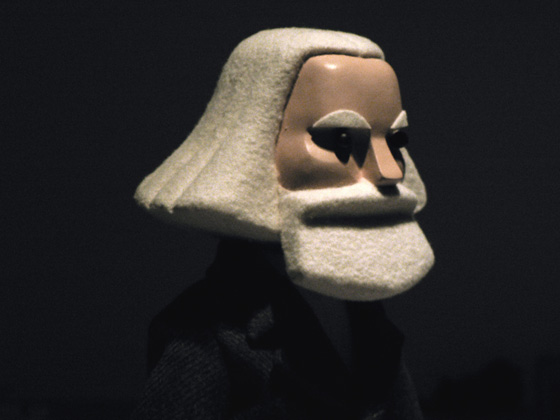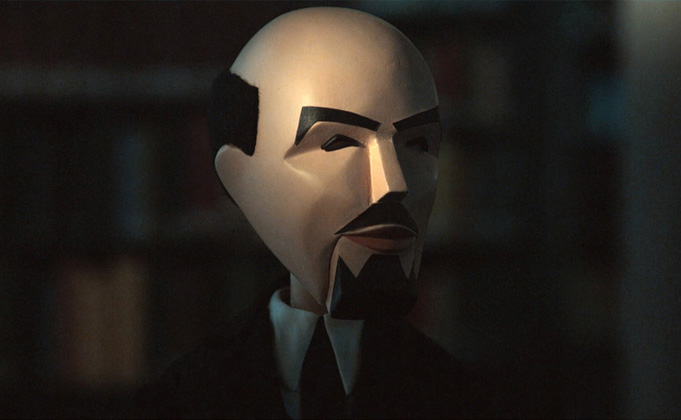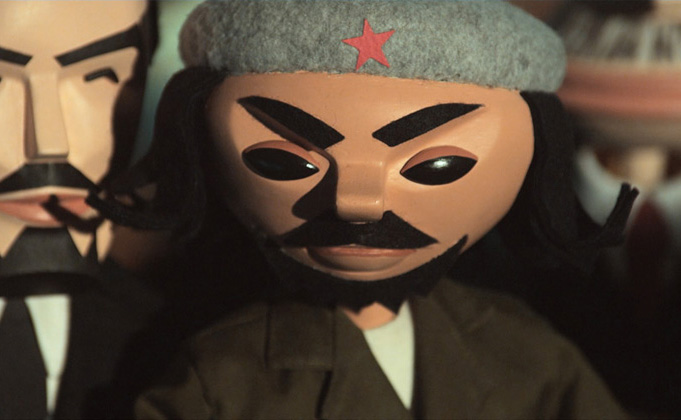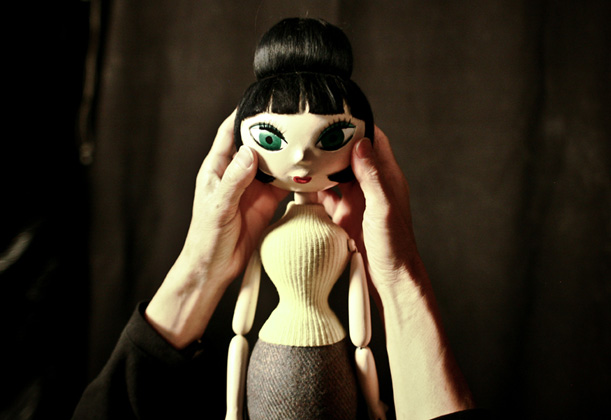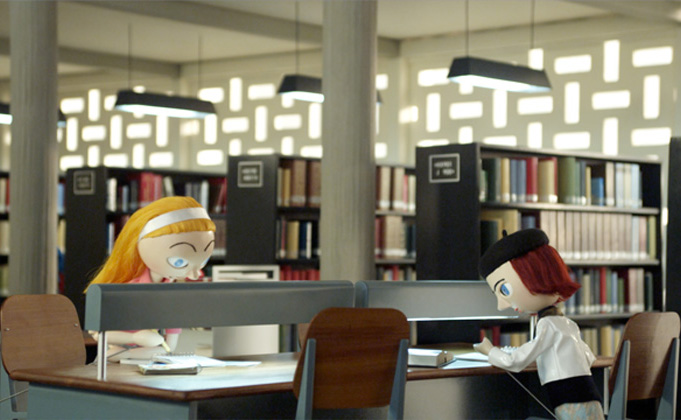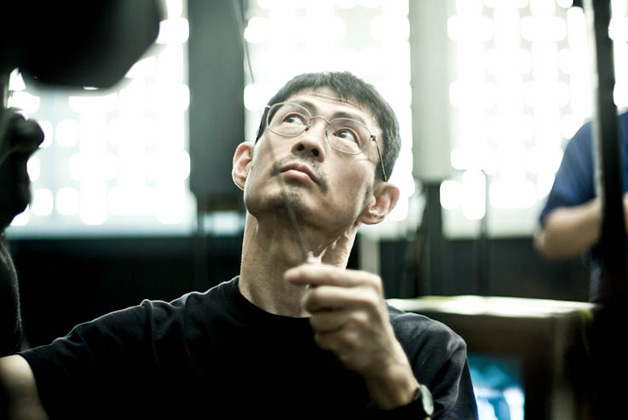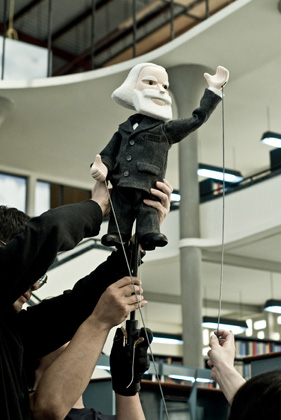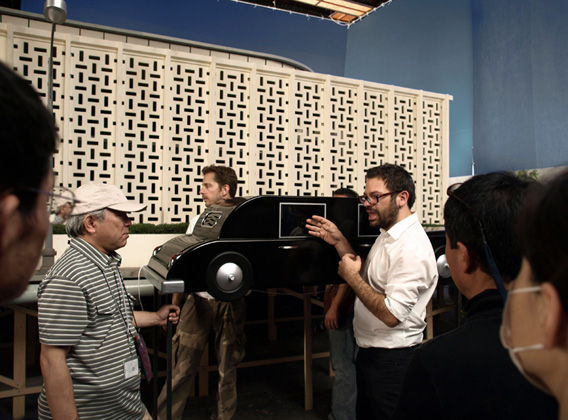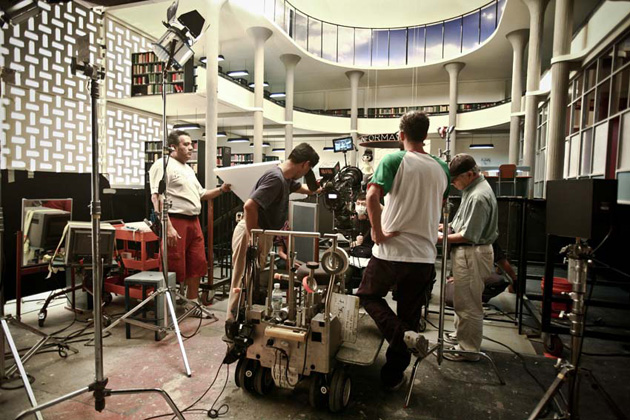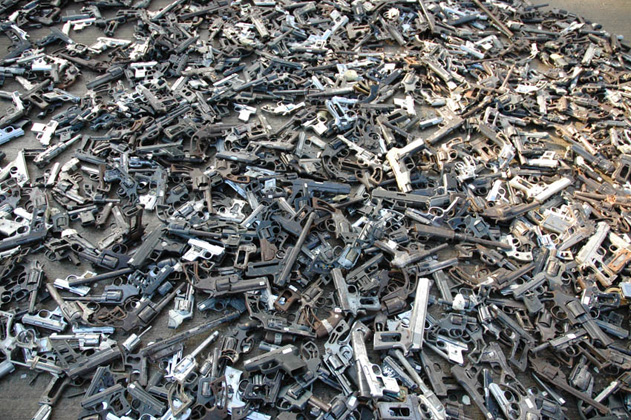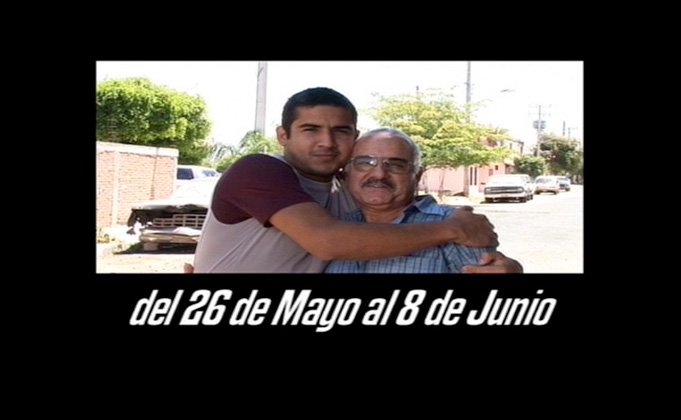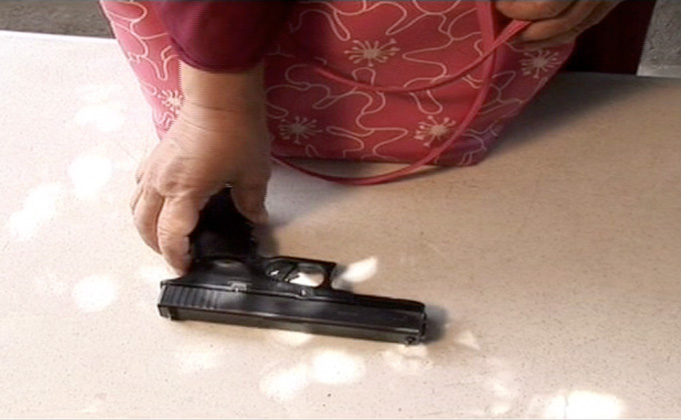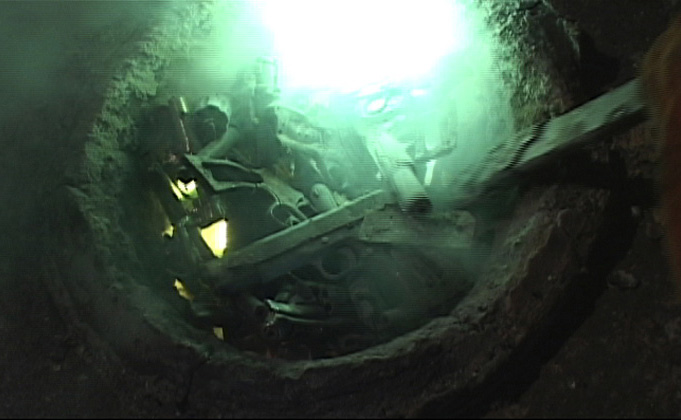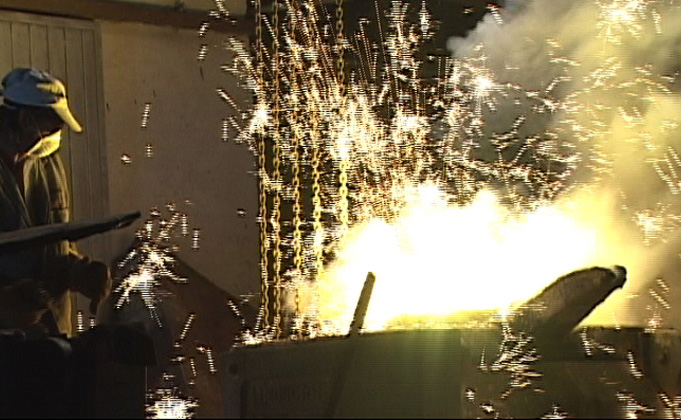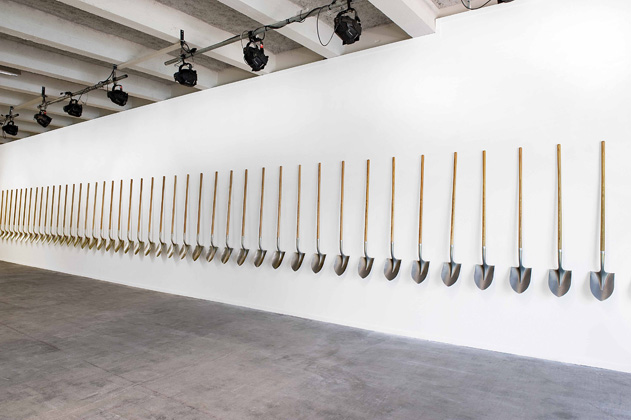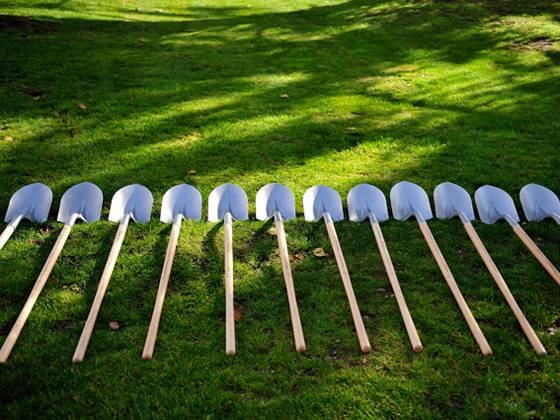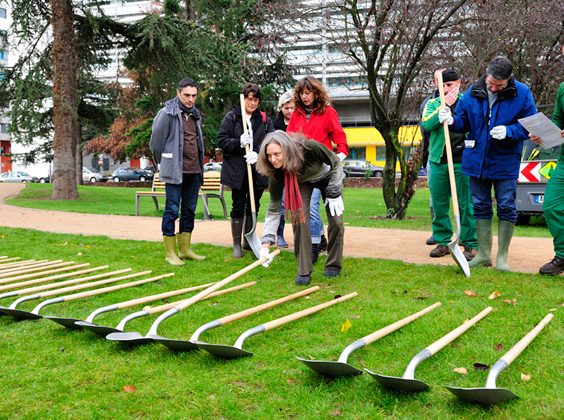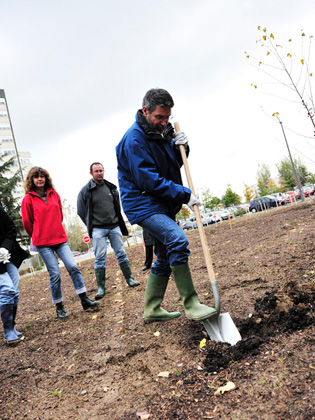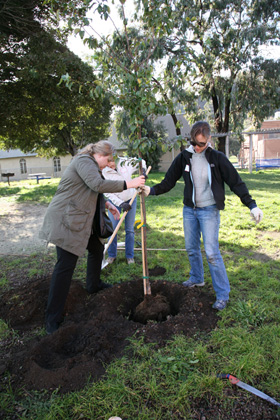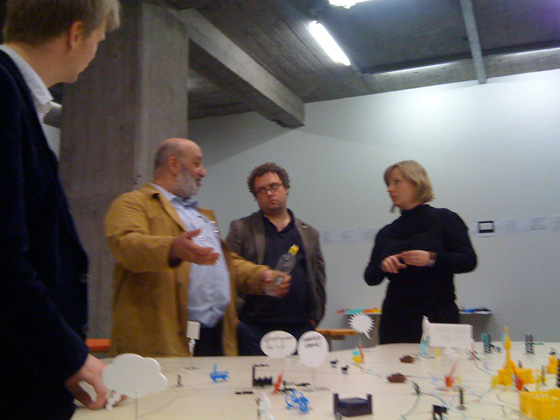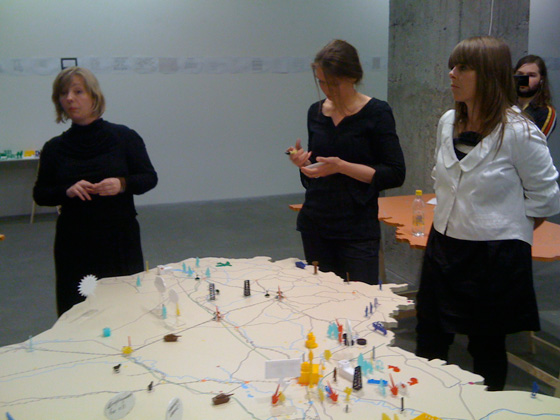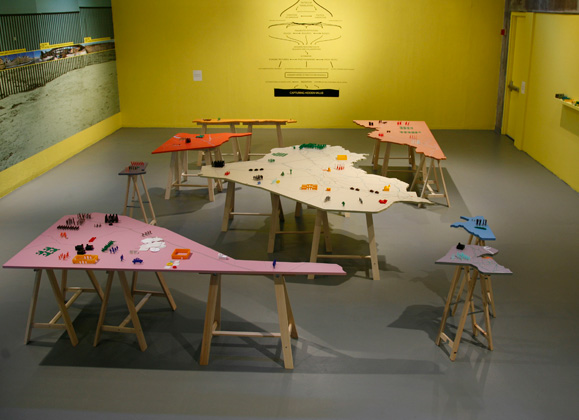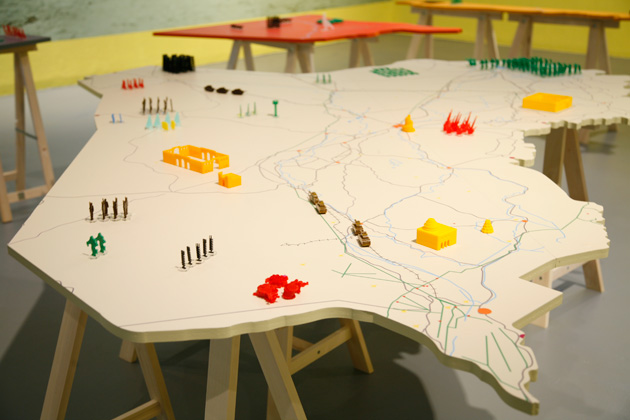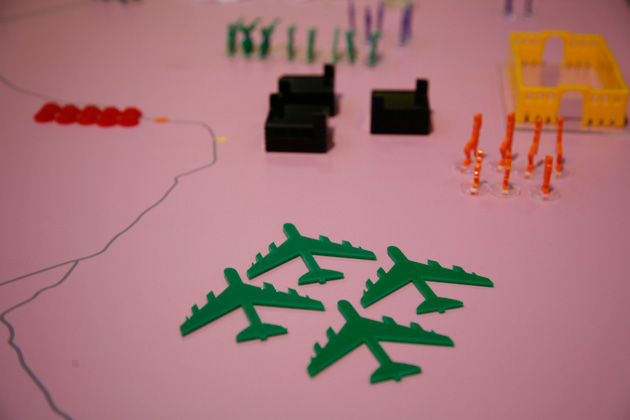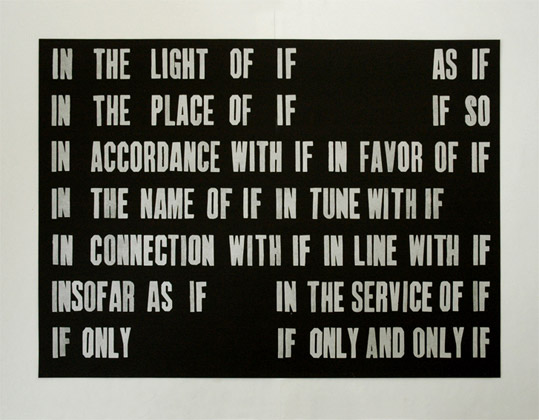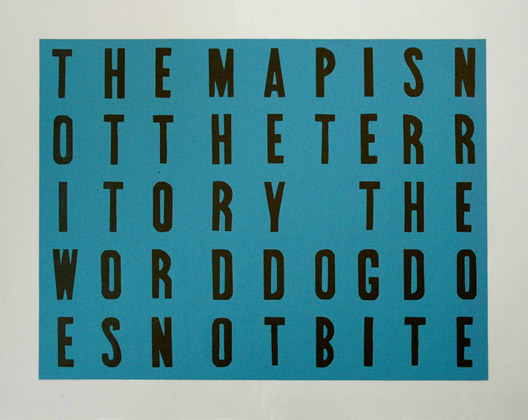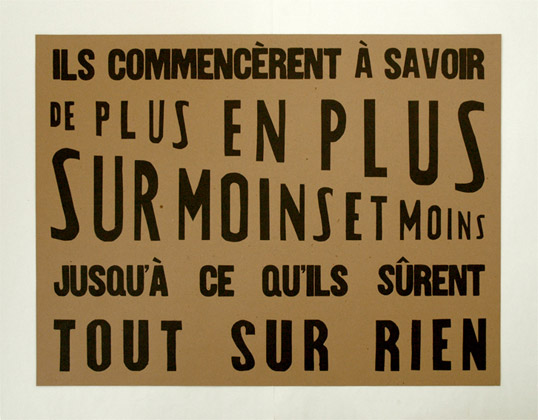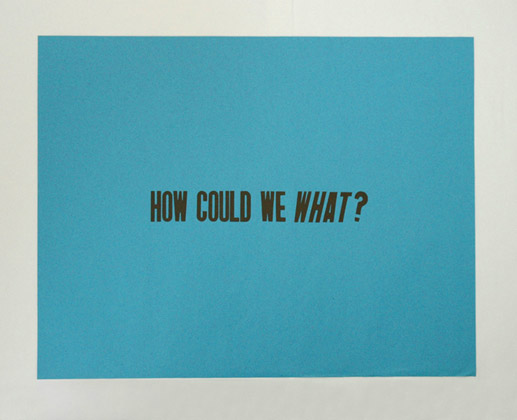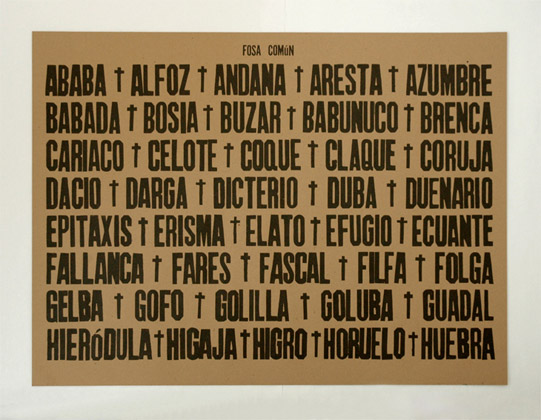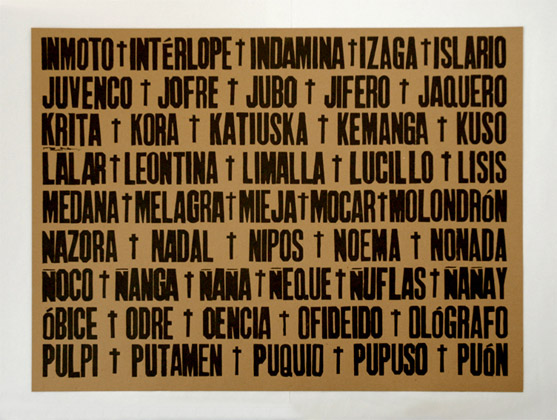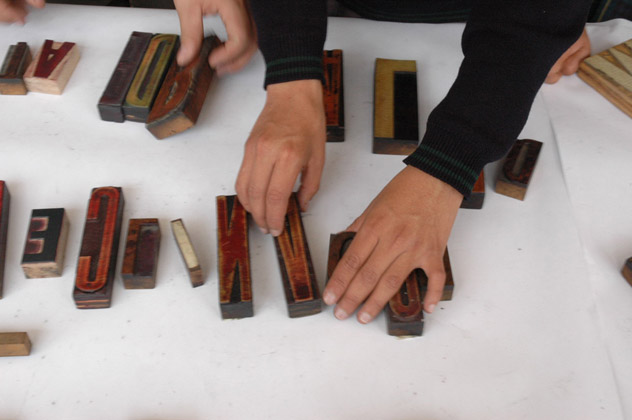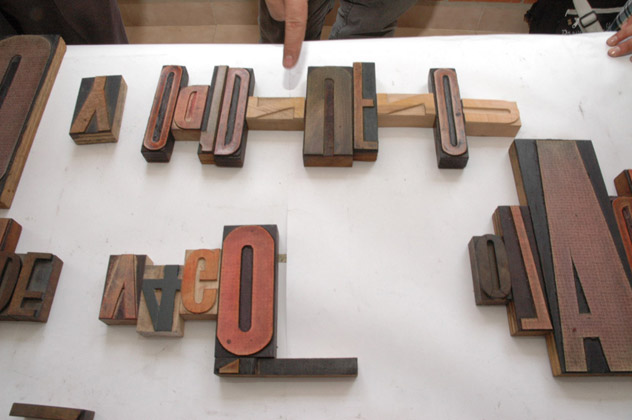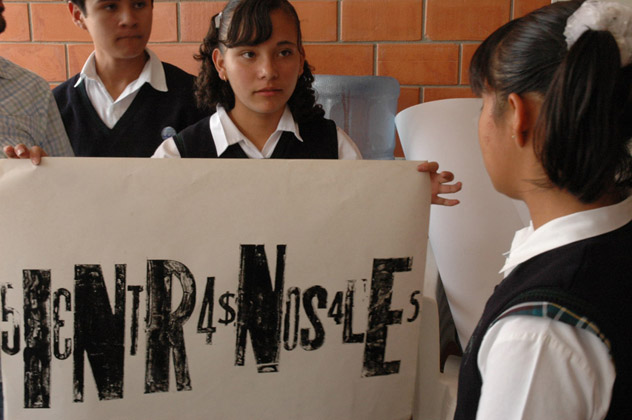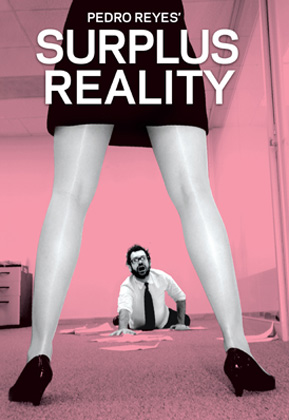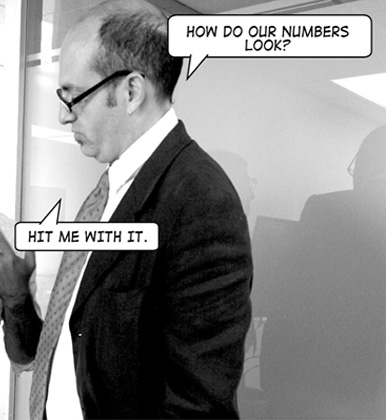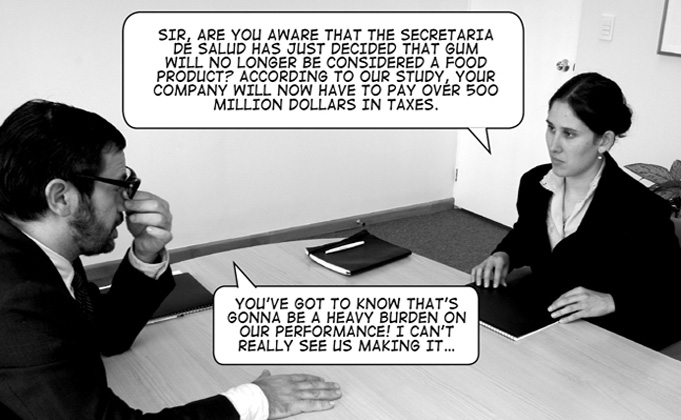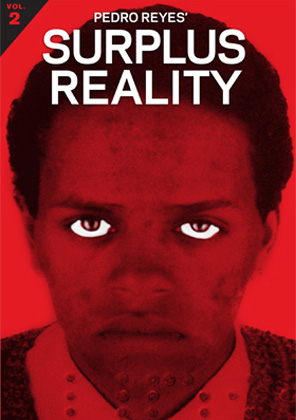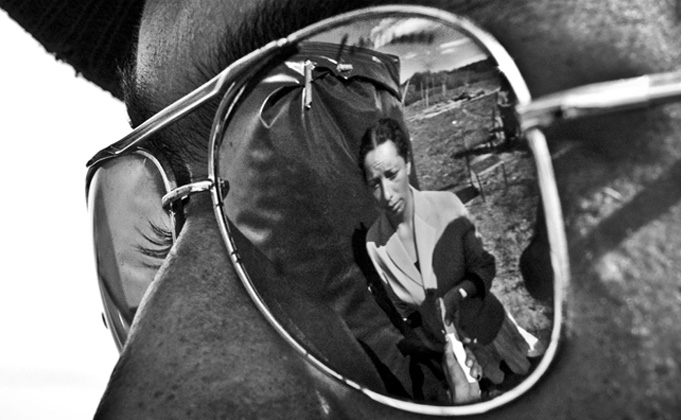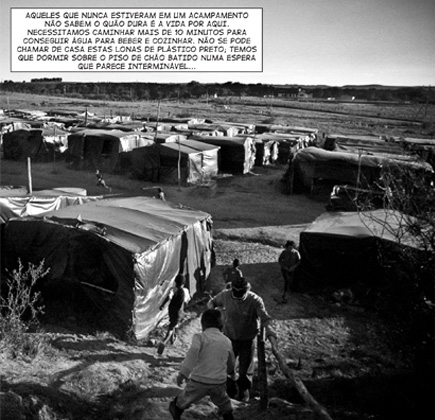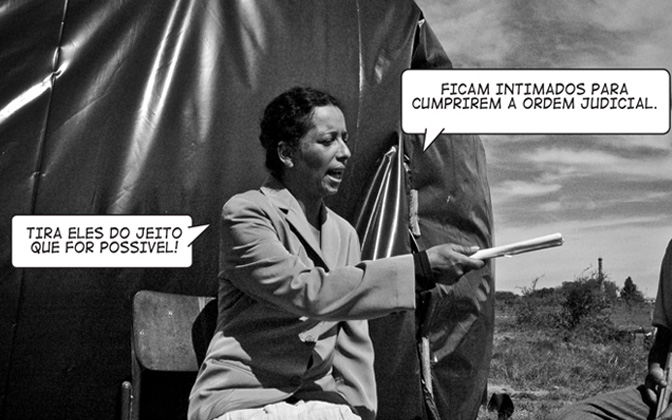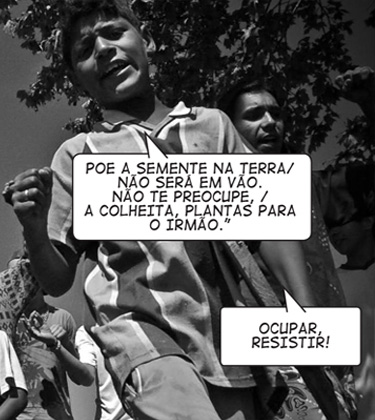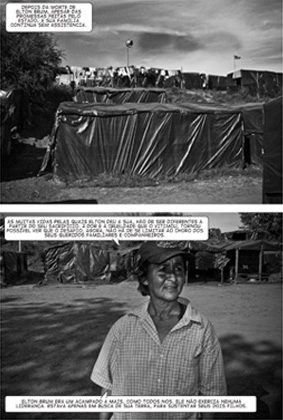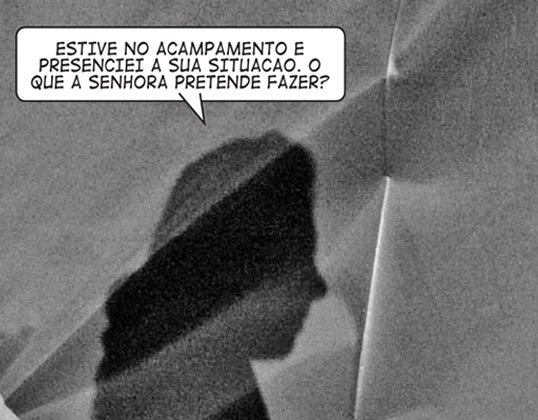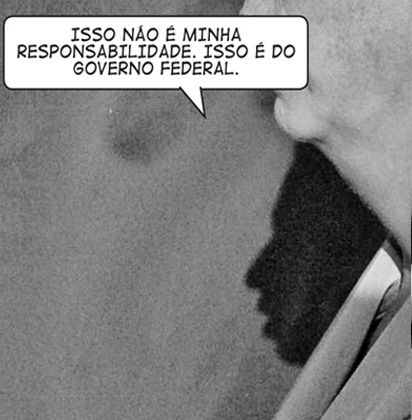| PEDRO REYES |
|
Wooden puppets, library set, video production
Walker Art Center, Minneapolis
2008 to present
|
|
Forty or fifty years ago most people defined themselves as advocates of either socialism or capitalism. Today, despite the increasing movements against the financial sector, governments and corporations, it seems that we have come to accept capitalism as the final model for the way the world functions. Baby Marx is an inquiry into this general assumption. Upon reading Karl Marx's critique of capitalism, I could not help but agree. Upon reading Adam Smith, I found he, too, has compelling arguments. In my head I continued to hear these voices debating, so I thought it would be interesting to stage a meeting between them.
A device known as counterfactual logic, which is nothing more than asking 'what if?' help me to set-up this encounter and bring together two characters that never met each other in real life and host a hypothetical debate. The main protagonists are Smith and Marx, who incarnated as puppets explain the world according to opposing ideologies. They also embody two conflicting sides of human nature. Smith believes that by pursuing one's self-interest, one makes the whole world richer, whereas Marx believes that people should share all resources in common and reject exploitation. I believe no one is totally devoid of both greed and generosity, so it only makes sense that these two voices resonate with our everyday moral decisions.
Of course, I am oversimplifying the subject, but I also believe that the complexity of history and the world economy should not dissuade people from overcoming their fear to deal with the subject. The project is therefore thought of as a means to provide economic and political literacy, using dialogues with excerpts or paraphrases of the historical figures main ideas. This is how puppets can be useful; puppeteering has historically been the equivalent to political cartoons in the performing arts. Early ventriloquists, such as court jesters, were the only ones who could make jokes in front of the king - the puppet would spit truths that were unacceptable from the mouth of a person. Ludwig Wittgenstein said that a serious philosophy book can only be written through jokes. I think jokes are highly efficient mechanisms to deliver content, they present a thesis and its antithesis in such an abrupt way that we can only handle the shock with laughter. Jokes are a sort of airbag that cushions the collision of reality with your expectation of reality, the collision of ideology and realpolitik. |
|
Collected guns melted into steel to fabricate shovels, tree planning
Jardín Botánico de Culiacán
2008
|
|
Palas por Pistolas initiated in the city of Culiacán, a city in western Mexico with a high rate of deaths by gunshot. The botanical garden of Culiacán has been comissioning artist to do interventions in the park and my proposal was to work in the larger scale of the city and organize a campaign for voluntary donation of weapons. Several television ads were prepared by the local TV station inviting citizens to give up a were gun and exchange for a coupon. Those coupons could be traded in a local store in exchanges for domestic appliances and electronics.
1527 weapons were collected. 40% of them were high power automatic weapons of exclusive military use. These weapons were taken to a military zone they were crushed by a steamroller in a public act.
The pieces were then taken to a foundry and melted. The metal was sent to a major hardware factory to produce the same number 1527 shovels. The tools were made under specifications such as a handle with a legend telling the story. This shovels have been distributed to a number of art institutions and public schools where adults and children engage in the action of planting 1527 trees. This ritual has a pedagogical purpose of showing how an agent of death can become an agent of life. Recent plantings: 2008 Vancouver Art Gallery 2008 San Francisco Art Institute 2008 Maison Rouge, Paris 2009 Lyon Biennial 2010 Marfa, Texas 2010 Denver, Colorado |
|
Custom made furniture, plexiglas game pieces, symposium
2008
|
|
Ideas for Iraq worked as a think-tank and discussion forum focused on the Iraqi occupation.
The discussion takes place around a table cut in the shape of the map of Iraq, and other tables representing its neighboring countries, reminiscent of scaled maps used by the military. These maps are used to plan and strategize military attacks or missions.
The table serves as a pedagogical tool to visualize the geographical, political, economic, military and demographic actors in the territory. It features Iraq's principal geographical characteristics. Furthermore, acrylic figurines represent infrastructural, demographic, civil and military objects: oil production facilities, natural resources and key civil and religious buildings. Additional pieces represent civilians from different ethnic groups, journalists, soldiers and armed forces both from Iraq and other countries. Participants are invited to use these elements on the table in order to illustrate their thoughts before entering discourse. Only until they lay out the pieces they can verbalize their thoughts, but not before. Ideas are arranged on the table in a way similar to a checkerboard, a game board or a strategy game.
In parallel to the discussions around the table, the conversations are recorded and included in the project's archive. REYKJAVIK LINE-UP May 2008 Experiment Marathon Reykjavik Art Museum › Pedro Reyes, artist › Magnús orkell Bernharsson, PhD in Middle Eastern History › Gurún Dögg Gumundsdóttir, Director of The Icelandic Human Rights Center › Sólveig Anna Bóasdóttir, PhD in theology › Linda Rós Alfresdóttir, MA in Islam and Middle Eastern History, Ministry of Social Affairs, Immigration › Stefán Pálsson, historian, member of CAMB, Campaign Against Military Bases › Viar orsteinsson, philosopher, editor of “Islam with a discount”, 2007 › Jón Ormur Halldórsson, PhD in political science › Herdís Sigurgrímsdóttir, Major, Public Information Officer of the NATO Training Mission in Iraq › Jóhanna Kristjánsdóttir, writer SAN FRANCISCO LINE-UP October 2008 Conflict Resolution San Francisco Art Institute › Teddy Cruz, artist › Susan Greene, artist, educator and clinical psychologist › Colby Buzzell, Iraq war veteran › Evelyne Jouanno, art historian and curator |
|
Portfolio of 16 prints made with wooden mobile characters
2008
|
|
|
|
Group activity, print shop
Chalco, México
2008
|
|
This workshop, conducted in collaboration with Prof. Doris Sommer, departed from a short story of Jorge Luis Borges, about the countless interpretations of a text. The one we chose to explore here was the typographical translation of a fragment using mobile typefaces. A technique widely used in the past, nowadays on the verge of extinction. The students not only printed their own posters, but they went into the streets, placing this prints on the neighborhood as an exercise to provide a spatial dimension to the written word.
|
|
Photographic novel
2008
|
|
Dear Reader,
SURPLUS REALITY is a fotonovela that portrays real-life situations. Every story contains at least one political or social dilemma which is then analyzed and leads to several possible endings. The participants are untrained actors and arrive at the set knowing only the first half of the story they are about to portray.
Once the main part of the story has been photographed, the cast and production staff participate in a workshop in which they propose their own alternate endings, thus becoming co-authors of the story.
The fotonovela as a genre was tipically used for romance stories, melodramas and crime fiction that often ended with the moral or physical annihilation of the characters. The goal here is diffierent: to find solutions, creative strategies for confronting seemingly untractable situations. Our aim is to come up with the best imaginable yet plausible alternatives. The idea behind creating SURPLUS REALITY is indebted to the methods described in Agusto Boal’s, Theater of the Oppressed, and Jacob-Levi Moreno’s, Sociodrama. While their methods reach only those who attend the performance, the fotonovela allows us to conserve that sponteneity while creating a visual document. Through SURPLUS REALITY we hope to identify a space between journalism and fiction, where real-life situations are not only described but creatively explored. Projecting a known fact through the prism of “what if,” generates a spectrum of counterfactual history, providing the subject with a new and more extensive experience of reality, a “surplus” reality. |
